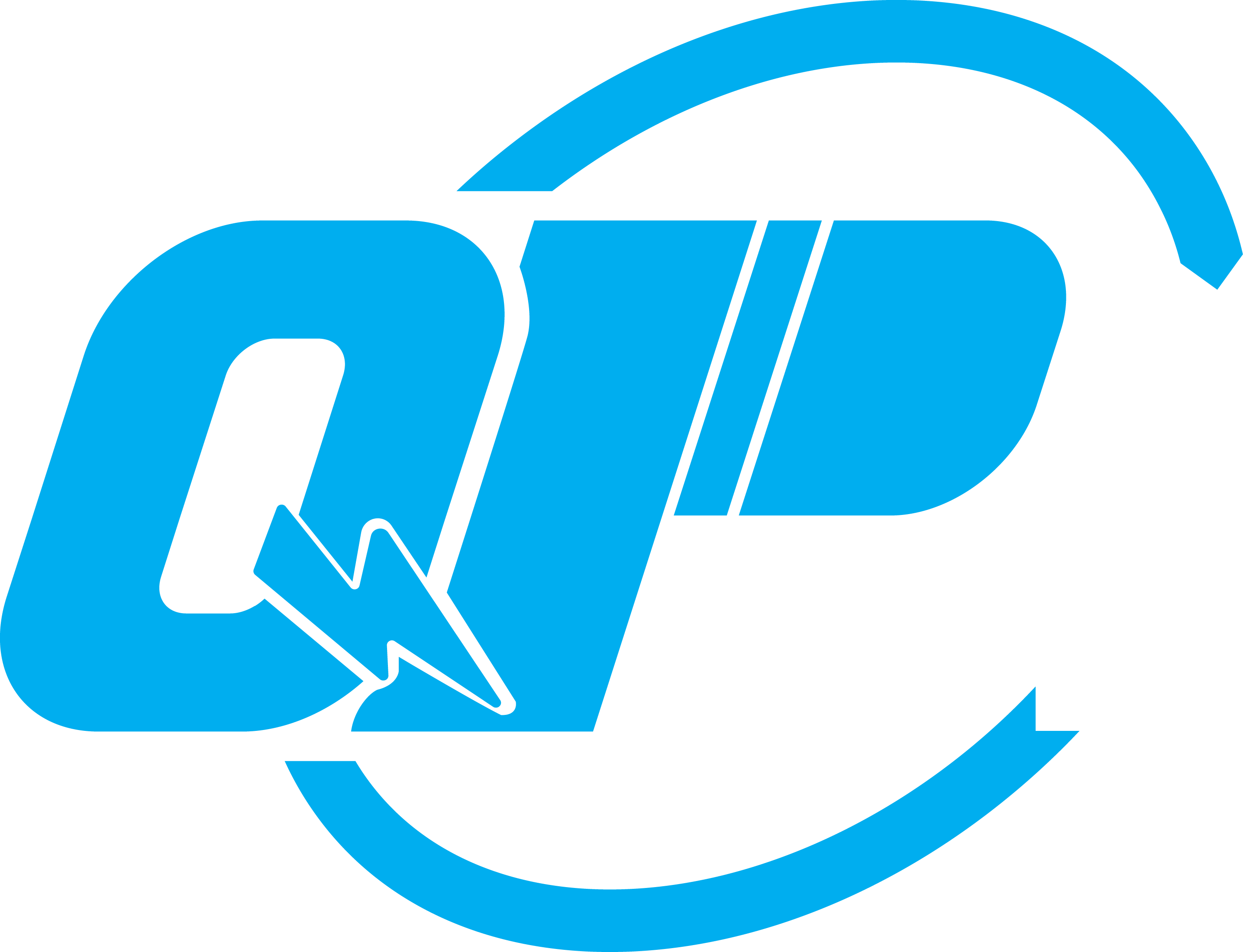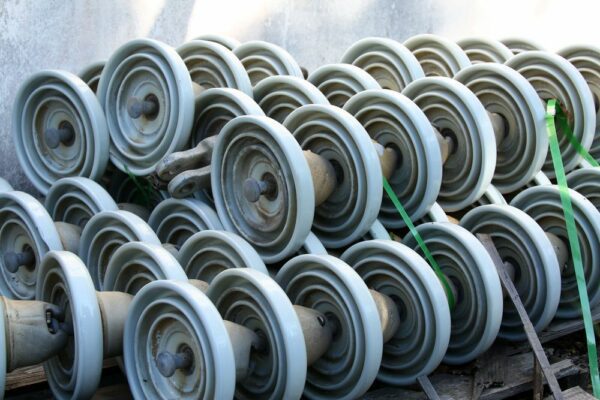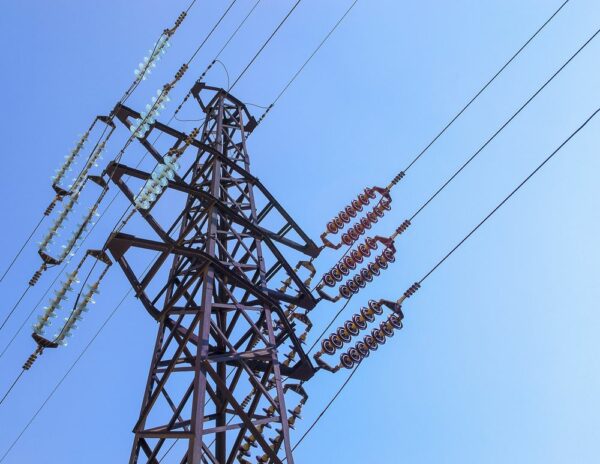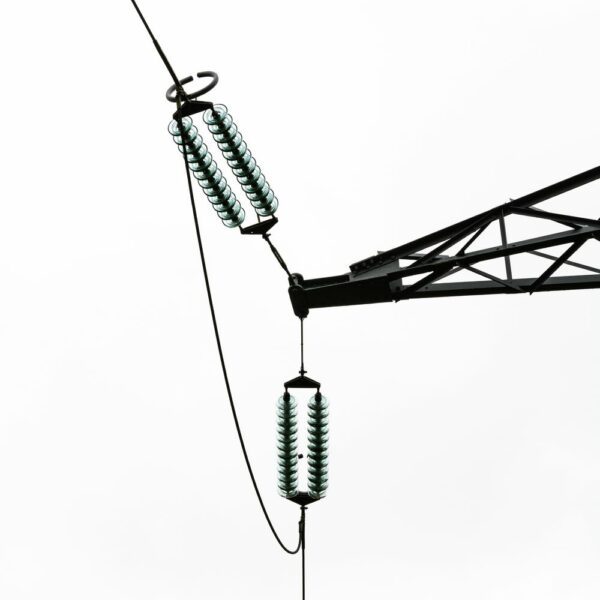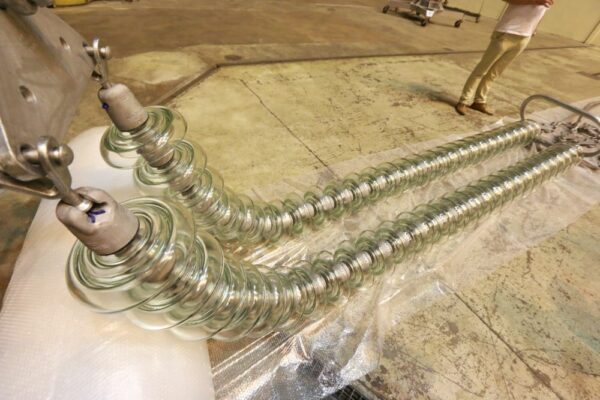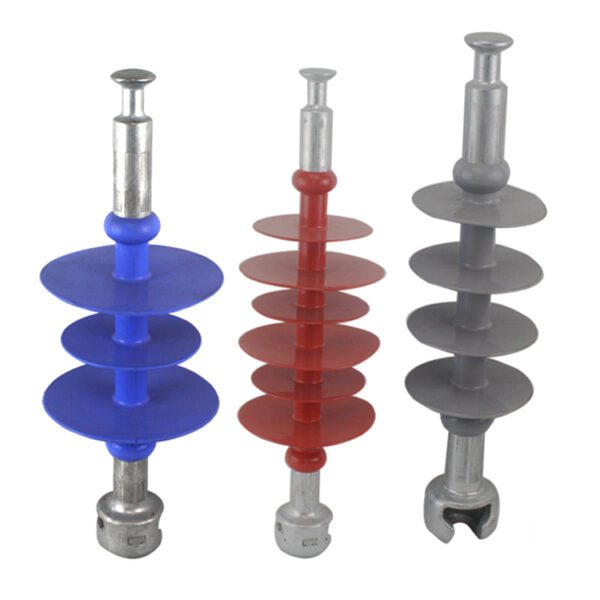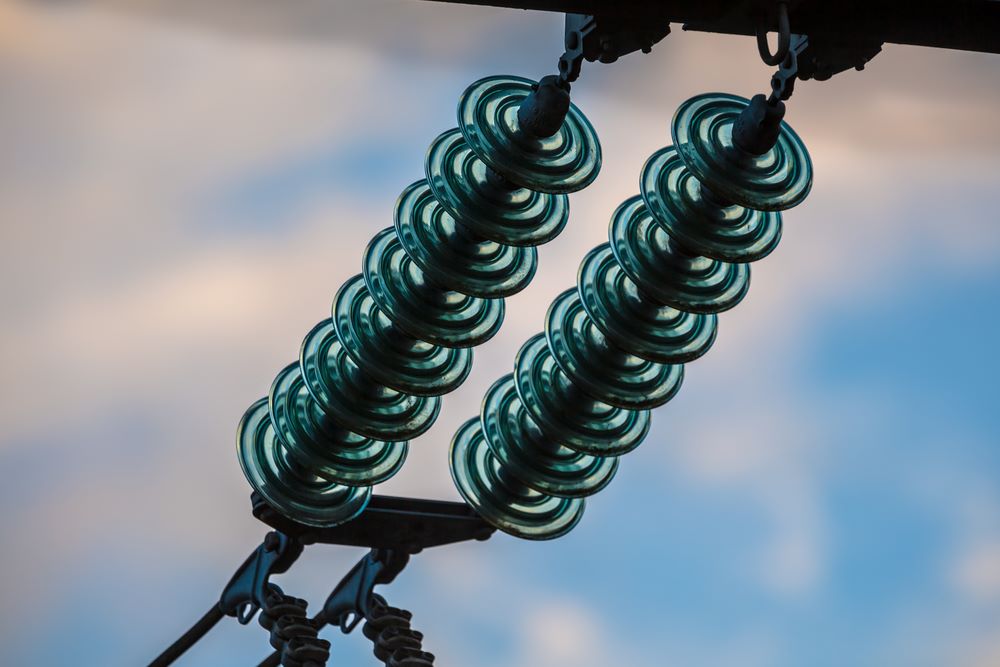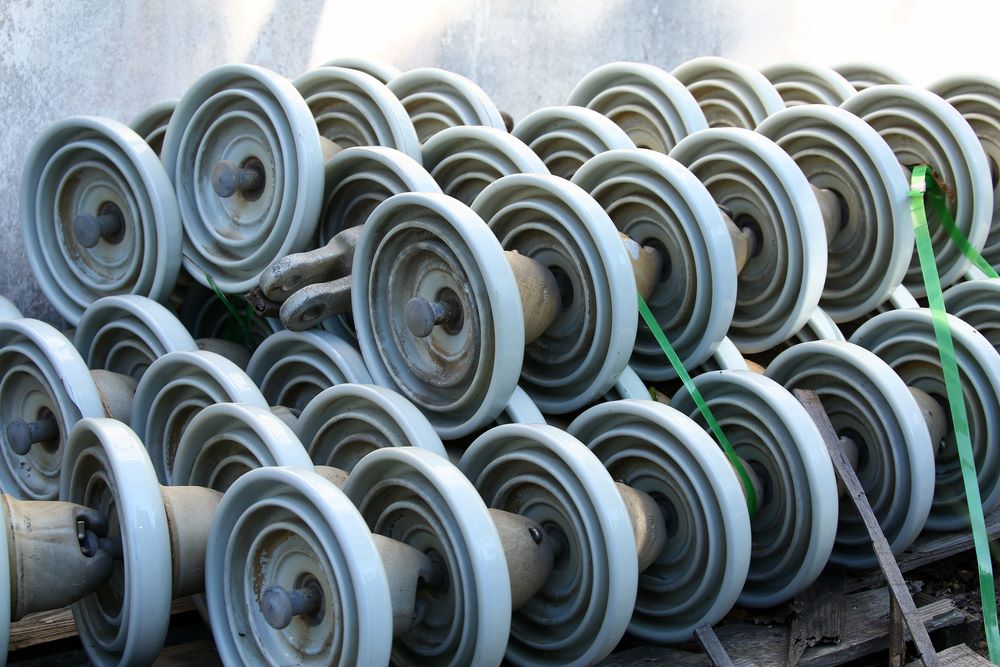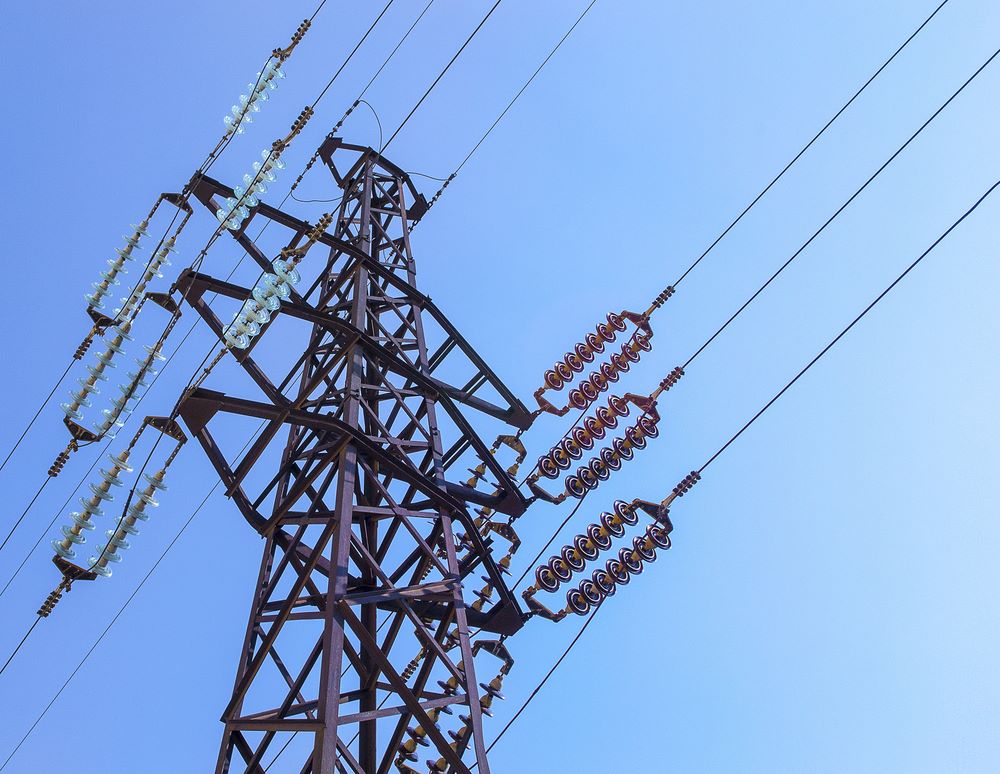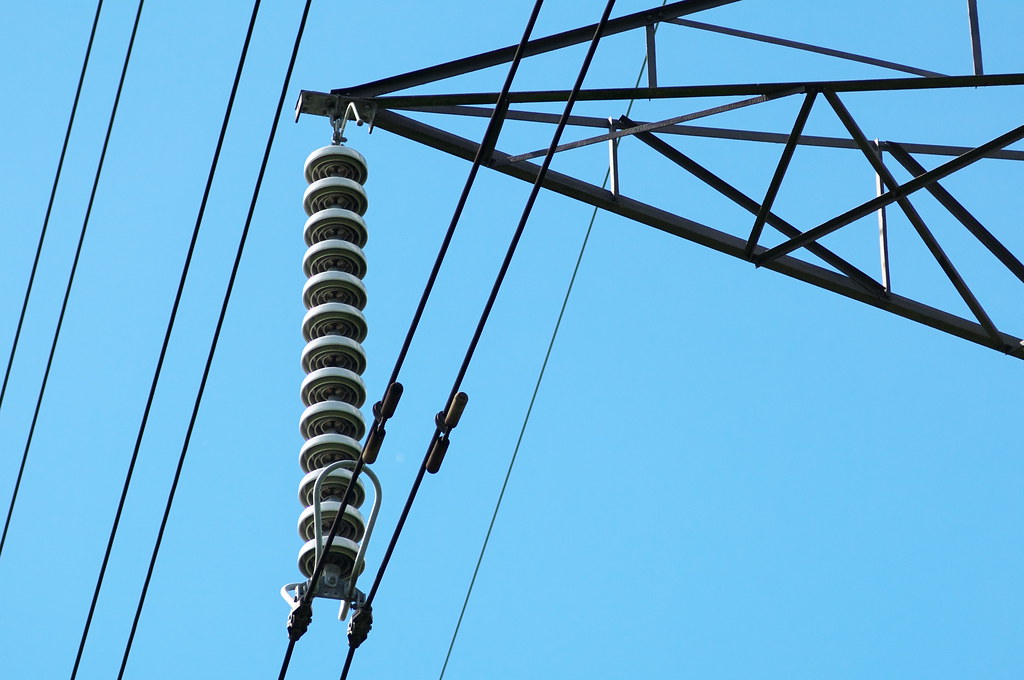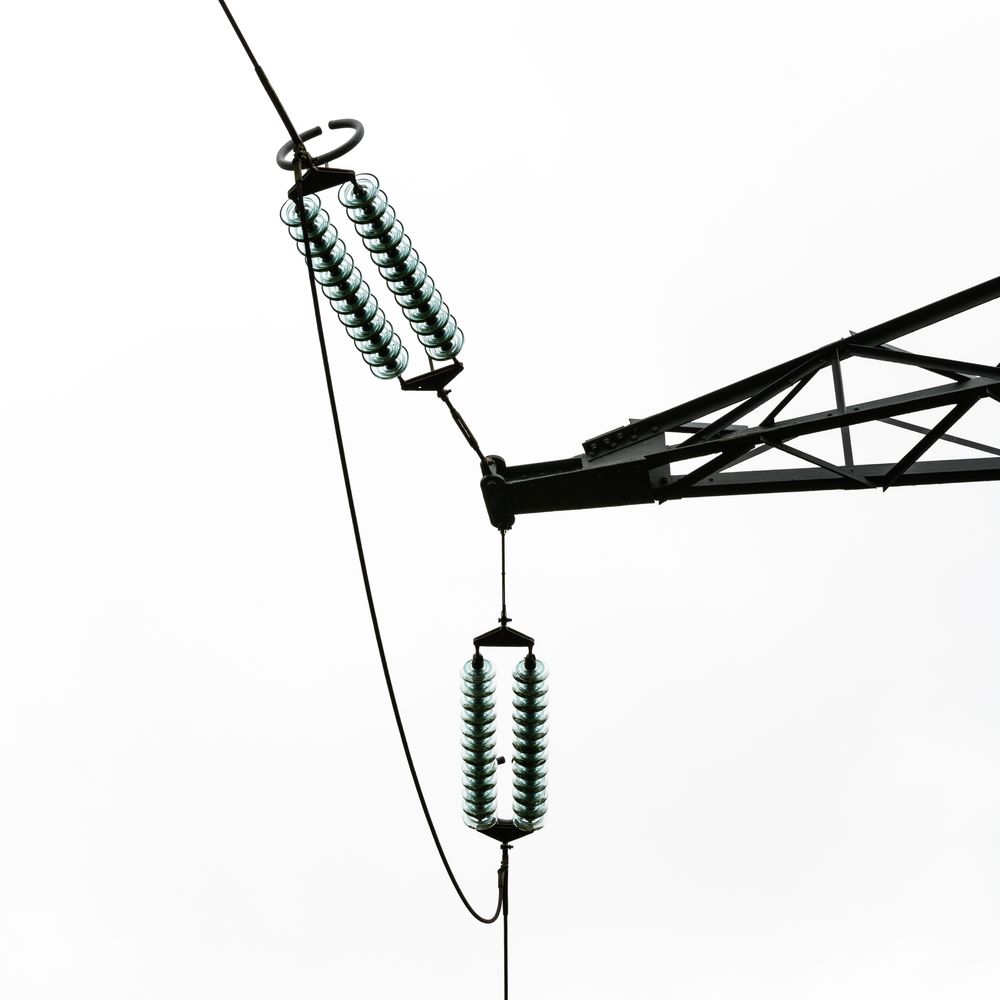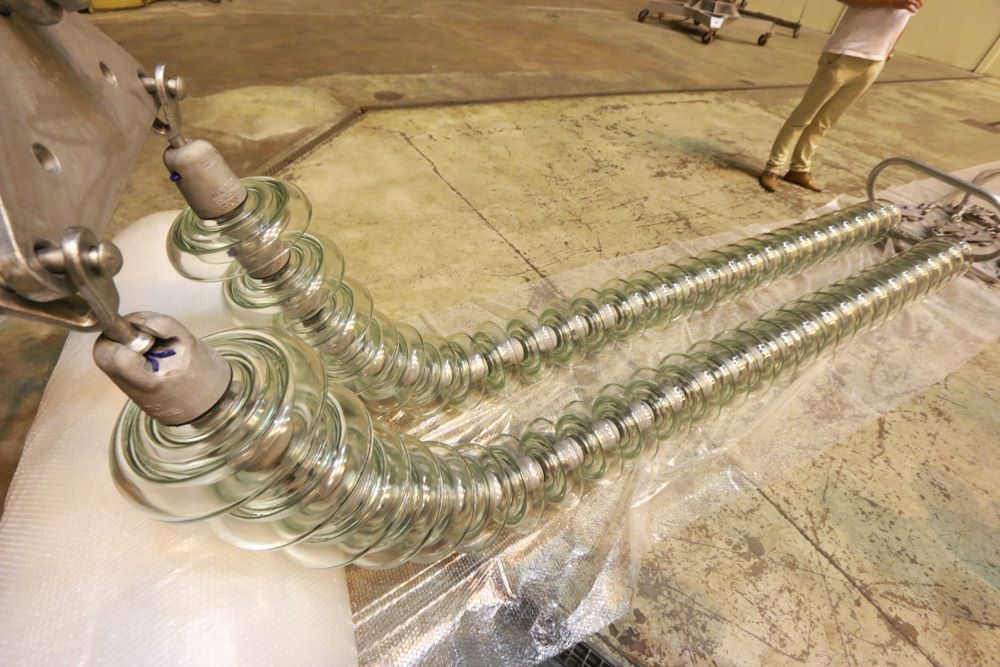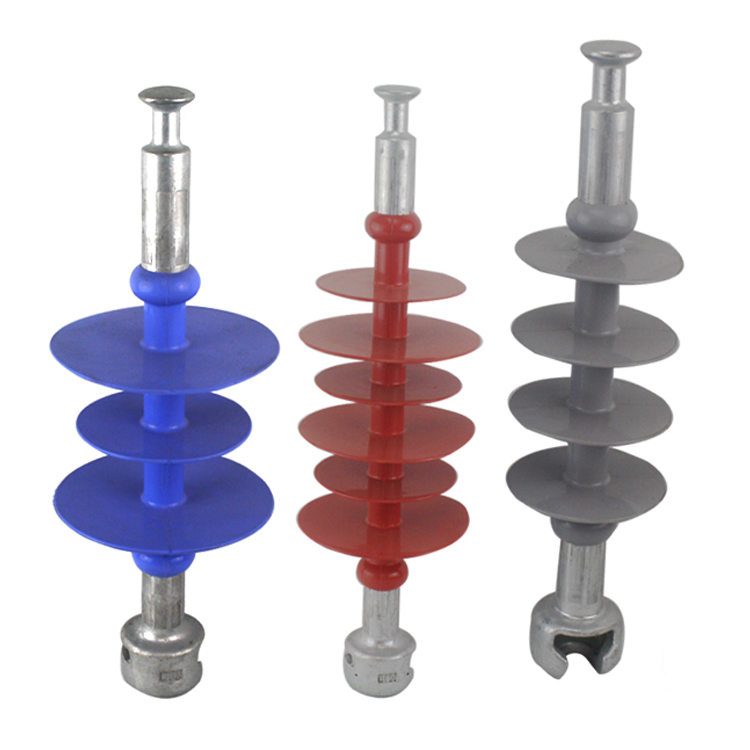Insulator String
- Description
- Specification
Description
Insulator strings are consist of dish insulators made of insulating materials such as glass, porcelain, or polymer. When the insulator string used in the horizontal, it is called a string insulator. The string insulators are usually used as dead end insulators.
A string insulator is used to sustain a considerable tensile load of the conductor in the dead-end or sharp curve of transmission lines, it must have enough mechanical strength and insulating resistance.
The insulator fittings are some small parts used with insulators. One full insulator string is consists of dish insulators and insulator sets, suspension clamp, tension clamp, and other fittings.
For low voltage lines such as a distribution line lower than 11kv, a shackle insulator can take its place.
When an electrical insulator is needed for high voltage transmission lines, there must be an insulator string. The more disc insulators used in a string insulator, the higher voltage it can bear. When the tensile load is extremely high, two or more insulator strings shall be used to provide security.
To know more about the string insulators, please contact us now.
Table of Contents
- 1 The Complete Guide for Insulator String
- 1.1 Chapter 1 – Types of insulator string
- 1.2 Chapter 2 – Components of insulator string
- 1.3 Fittings for insulator strings
- 1.4 Chapter 3 – Rating and design of insulator string
- 1.5 Chapter 4 – Manufacture of insulator string
- 1.6 Chapter 5 – Testing of insulator string
- 1.7 Frequently Asked Questions (FAQs)
The Complete Guide for Insulator String

Now let’s explain the insulator string installation construction.
Chapter 1 – Types of insulator string
According to the different connection ways, there are four types of insulator string, single tension string, double tension string, single suspension string, double suspension string.
 single tension string
single tension string
 single suspension string
single suspension string
 double suspension string
double suspension string
Chapter 2 – Components of insulator string
-
Insulators and insulator sets
 The single “I” composite insulator, long rod type, of sufficient mechanical capacity is used for the outer phases, and a “V” insulator set for the middle phase.
The single “I” composite insulator, long rod type, of sufficient mechanical capacity is used for the outer phases, and a “V” insulator set for the middle phase.
The minimum creepage distance is related to the highest system (phase to earth) voltage, USCD as per IEC 60815.
The insulator string is of sufficient length to provide the required electrical performance in regard to specific leakage paths and minimum required to withstand voltages. This is confirmed by tests on complete sets, as the insulator set fittings contribute to overall performance.
All insulator sets are provided with the necessary arcing devices in order to keep their radio and television noise as low as possible. A noise level of less than 50 dB above 1 PV is ensured under standard laboratory conditions. This is proven by tests as per the mentioned standards.
All insulator sets are designed to withstand the single-phase fault currents. Locking devices for the insulator units themselves and for an associated ball and socket fittings are of stainless steel and comply with IEC 60372. The design is such as to allow easy removal for replacing of insulator units or fittings without the necessity to remove the insulator set from the cross-arms. Locking devices are incapable of rotating when in position.
The double suspension insulator set is used for crossings of main roads, railways, navigable waterways and other overhead transmission lines. Double tension sets are used as standard sets on tension towers.
-
Composite insulator units

composite insulator
The insulator units consist of composite long-rod type insulator featuring a glass-fiber reinforcing epoxy rod core with high temperature vulcanized silicone rubber housing and clevis caps.
Design of Composite insulator units
The insulators have sufficient length to provide the required electrical performance in one single unit. In-line coupling of two or more units is dangerous.
The core has an epoxy resin rod with axial glass fiber reinforcement of high strength (fiber reinforced plastic rod). The interface formed between rod and housing will be of a quality to prevent brittle fracture phenomena, i.e. high electrical strength and equivalent acid resistance are required. Therefore, E-CR-glass fibers are used for the core.
The core of the composite insulator is protected against environmental influences by silicone rubber housing. The thickness of the silicone rubber covering the rod is at least 3mm. The housing is perfectly (chemically) bonded to the core. The chemical bond between the core and the housing is stronger than the tear strength of the housing material.
QUAN PHAM has a proven record of using non destructive technique (N.D.T.) to check the quality of the core to the housing interface.
The silicon rubber can be directly molded onto the core. In order to achieve an excellent pollution performance and tracking performance (minimum class 1A 3.5 according to IEC 60587), the application of high temperature vulcanizing (HTV) silicon rubber filled with an appropriate amount of Aluminum trihydrate (ATH) is applied. The material is of blue/gray color and is resistant to the ultra-violet radiation being present in the solar spectrum at ground level. For the design of shed profiles, IEC 60815 is applied.
The metal end fittings are made of forged steel and hot dip galvanized according to ISO 1461. The fittings are attached to the rod by a compression method process which does not damage the individual fibers of the rod in any way. Fittings configurations are defined by the actual need (e.g. ball and socket or clevis and tongue connection) and will comply with the standard requirements.
The gap between fitting and core housing is sealed permanently against the ingress of moisture. Sealing by compression only is not regarded to be permanently waterproof. Covering the cap, even partly, with housing material is unacceptable due to electrical reasons. Sealing of the interface by application of an elastomer with permanent elasticity is considered an acceptable solution. The material will adhere to the surface of the metal cap, as well as to the housing.
-
Fittings for insulator strings
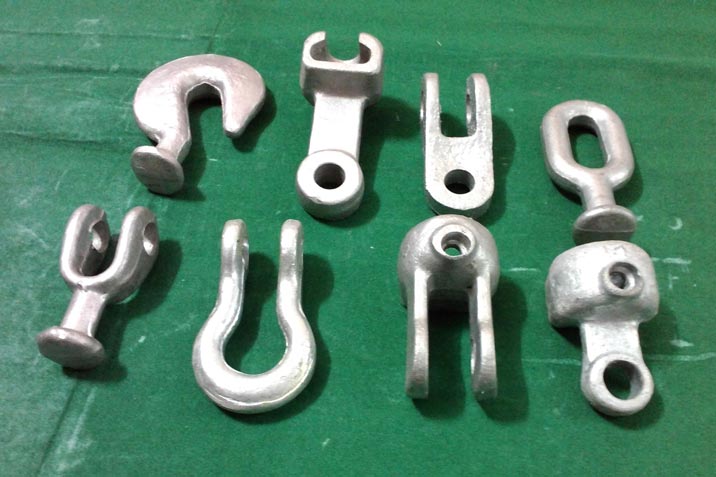
insulator fittings
The insulator units are assembled into insulator sets with appropriate fittings. The design of adjacent metal parts and mating surfaces are such to prevent corrosion of the contact surfaces and to maintain good electrical contact under service conditions.
All parts are designed to withstand the mechanical loads during the lifetime as calculated for the insulator string sets and to avoid loosening in service due to vibrations or other reasons.
The insulator set fittings connection-to-tower withstand without Q degradation such a short-circuit current without exceeding a temperature of 400°C. All ferrous parts of the assemblies component elements and of the accessories for conductors are hot dip galvanized according to ISO 1461, with a coating of 610 g/m2(85 gm), except for bolts, nuts, and washers, where a minimum of 395 g/m2 (55 gm) will be accepted.
Split pins of all clamps and fittings are of stainless steel.
Arcing rings
Arcing rings The arcing rings of the insulator sets must fulfill simultaneously the functions of arcing rings, corona shield, and potential distribution devices.
As an arcing device, the guard rings are designed to protect insulators and conductors when flashover occurs. The arcing fittings are made of hot dip galvanized steel and have the capability to withstand short circuit currents. The arcing fittings are designed so that in case of flashover the arc will be led to the end burning spot.
They may reach a final temperature not exceeding 400°C during the short- circuit. The function of arcing protection must not be greatly altered by the power arc.
As corona shield devices, the guard rings are designed to ensure under fair weather, and under specific site conditions, a corona-free insulator set line end as well as the specified insulator set radio noise performance.
As potential distribution devices, the guard rings are designed to ensure a uniform distribution of the potential along the insulator string.
The design of the guard rings considers and optimizes simultaneously all the functions required.
The rings are strong enough to support a weight of 90 kg without permanent deformation. The ring attachment is via bolted connections to the hardware assembly.
Chapter 3 – Rating and design of insulator string
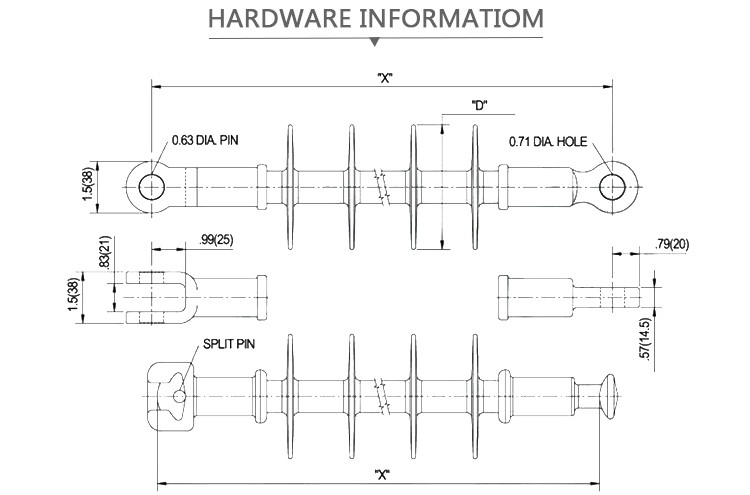
design of insulator string
A minimum creepage distance of 25mm/kV applies to suspension and tension insulator strings throughout the length of the transmission line.
The design of insulators and fittings is such as to avoid local corona formation and discharge likely to cause excessive radio interference; all insulator fittings use corona free nuts with split pins or “nyloc” or similar torque nuts
Chapter 4 – Manufacture of insulator string
Suspension and tension insulators are of the long rod composite type and for the type of fittings, the contractor has to take prior approval from Engineer-In charge. The insulators are manufactured completely with a suitable corona ring and corona free nuts and split pins.
The insulators are of the puncture-proof type. These insulators are made of a core fiberglass-reinforced resin and shed of different plastic materials. They are of lightweight and high tensile strength. They will withstand safely all operating stresses including Ozone and UV radiation The accessories for the insulators will be matched to suit, in accordance with IEC 61109. All parts of the insulator are free from any defects which may impair the mechanical or electrical properties of the insulator.
 All materials, whether fully specified herein or not, are of first class quality and shall conform to the best modem practice and comply in all respects with these Specifications. The materials shall be free from folds, cracks, and other exterior and interior defects that can affect its strength, ductility, durability, or ability to function.
All materials, whether fully specified herein or not, are of first class quality and shall conform to the best modem practice and comply in all respects with these Specifications. The materials shall be free from folds, cracks, and other exterior and interior defects that can affect its strength, ductility, durability, or ability to function.
All materials will be inspected and tested in full to prove compliance with the requirements of these Specifications and to the satisfaction of the Employer.
The testing shall be carried out according to the relevant standards approved by the Customer.
Assembly is performed in such a way that the mechanical properties cannot be affected and to ensure that the insulating part is not subject to any mechanical stress due to pressure exerted by the bottom edge of the cap.
The free surface of insulating parts will be cleaned of impurities.
The permitted tolerances will meet the requirements according to IEC 61109:
Each insulator can be marked with the following information:
Customers’ name or logo;
production year;
specified mechanical load;
identification code providing traceability.
Chapter 5 – Testing of insulator string
 Testing of insulators and hardware
Testing of insulators and hardware
Tests of Insulators and insulator sets
- The insulator units and the insulator sets are subject to type, sample and routine tests according to:
- IEC 61109 – Composite insulators for AC overhead lines with a nominal voltage greater than 1000V, Definitions, test methods, and acceptance criteria.
- IEC 60437- Radio Interference Test
- IEC 60507- Pollution Test
- IEC 60587- Test methods for evaluating resistance to tracking and erosion
- IEC 60591 – Sampling rules and acceptance criteria.
- Type, sample and routine tests will be performed according to applicable standards.
- Regarding composite insulators, the following sample tests will be carried out in addition to IEC 61109:
- 96 h acid resistance test of the loaded rod, in order to evaluate whether the specified glass material is appropriate
- 96 h tensile test (60% of UTL or 70% of SML as per IEC 61109) with the determination of UTL subsequently, in order to verify compliance with type test certificates
- Tracking and erosion tests as per IEC 60587 applied for a specimen of housing material, in order to prove the housing material.
General Tests
Full and complete testing (Design Test, Type Test, Sampling Test, Routine Test) of all components will be carried out in accordance with IEC 61109 (latest version) and to the satisfaction of the Customer.
Sample Tests
QUAN PHAM will carry out the sample test in accordance with IEC 61109.
QUAN PHAM will keep the Engineer informed about the progress of QUAN PHAM of materials and works so that the witness, inspection, and testing can be performed in the presence of the Customer’s representative.
Before every inspection and test supervised by the Customer, QUAN PHAM will assure the Customer that the work is in all respects is ready for inspection and testing, according to this Specification. The insulators which have been subjected to sample tests will not be included in the delivery lot.
Routine Tests
QUAN PHAM shall carry out routine tests as specified in IEC 61109 (latest version) at their own expense.
Frequently Asked Questions (FAQs)
What is an insulator?
An insulator is a vital component used in electrical systems to prevent unwanted flow of current to the earth from their supporting points.
Insulators are made of insulating materials, porcelain, glass or silicone rubber, they are so insulated that no current can pass through them.
How many types of insulators?
According to the function, more than 5 types:
- Pin Insulator
- Suspension Insulator
- Strain Insulator
- Spool insulator
- Stay Insulator, and so on
According to the voltage:
- 5 grades in common insulator voltage values: Low voltage (LV), Medium voltage (MV), High Voltage (HV), Ultra High Voltage (UHV), Extra High Voltage (EHV).
- 3 grades in insulator voltage for power lines or substations: Distribution line insulator voltage, Transmission line insulator voltage, Substation insulator voltage
What tests should do with insulators?
- Routine Tests: Electrical Routine tests, Mechanical Routine tests, Visual examination and check for compliance.
- Sample Tests, insulators took at random from batches should take Verification of dimensions, Temperature cycle test, mechanical failing load test and so on.
- Type Tests, thermal mechanical performance tests carried out in accordance with IEC 575: Dry lightning impulse and Wet power frequency withstand voltage test.
All the tests are performed in accordance with the relevant IEC standards supplemented by the specific requirements.
How to choose the reliable stay insulator manufacturers?
The manufacturer and supplier should have adequate resources and capacity to supply the best stay insulators for overhead lines.
Checking what other people are saying about the insulators from a particular manufacturer. This is possible by reading stay insulator reviews.
| Sr. No. | Description/Details | Unit | Specified | Tendered |
| 1 | Insulator Type | Composite Long Rod | ||
| 2 | Normal Voltage | kV | 220 | |
| 3 | Maximum Voltage | kV | 245 | |
| 4 | System Frequency | Hz | 50 | |
| 5 | Rated impulse withstand voltage (Peak) | kV | 1,050 | |
| 6 | Rated 1 min power frequency withstand voltage (Peak) | kV | 460 | |
| 7 | Minimum Mechanical Failing Load for fittings and Insulators | kN | 210 | |
| 8 | Outside diameter of unit | mm | 100 | |
| 9 | Minimum creepage distance | mm/kV | 25 | |
| 10 | Minimum protective leakage path | % | To be specified | |
| 11 | Applicable standard | DIN 48013, IEC 60016,60305,60430,060815 |
Table 1: Tension Insulator Set
| Sr. No. | Description/Details | Unit | Specified | Tendered |
| 1 | Insulator Type | Composite Long Rod | ||
| 2 | Normal Voltage | kV | 220 | |
| 3 | Maximum Voltage | kV | 245 | |
| 4 | System Frequency | Hz | 50 | |
| 5 | Rated impulse withstand voltage (Peak) | kV | 1,050 | |
| 6 | Rated 1 min power frequency withstand voltage (Peak) | kV | 460 | |
| 7 | Minimum Mechanical Failing Load for fittings and Insulators | kN | 160 | |
| 8 | Outside diameter of unit | mm | 100 | |
| 9 | Minimum creepage distance | mm/kV | 25 | |
| 10 | Minimum protective leakage path | % | Tobe specified | |
| 11 | Applicable standard | DIN 48013, IEC 60016,60305,60430,060815 |
Table 2: Suspension Insulator Set
